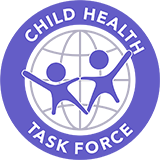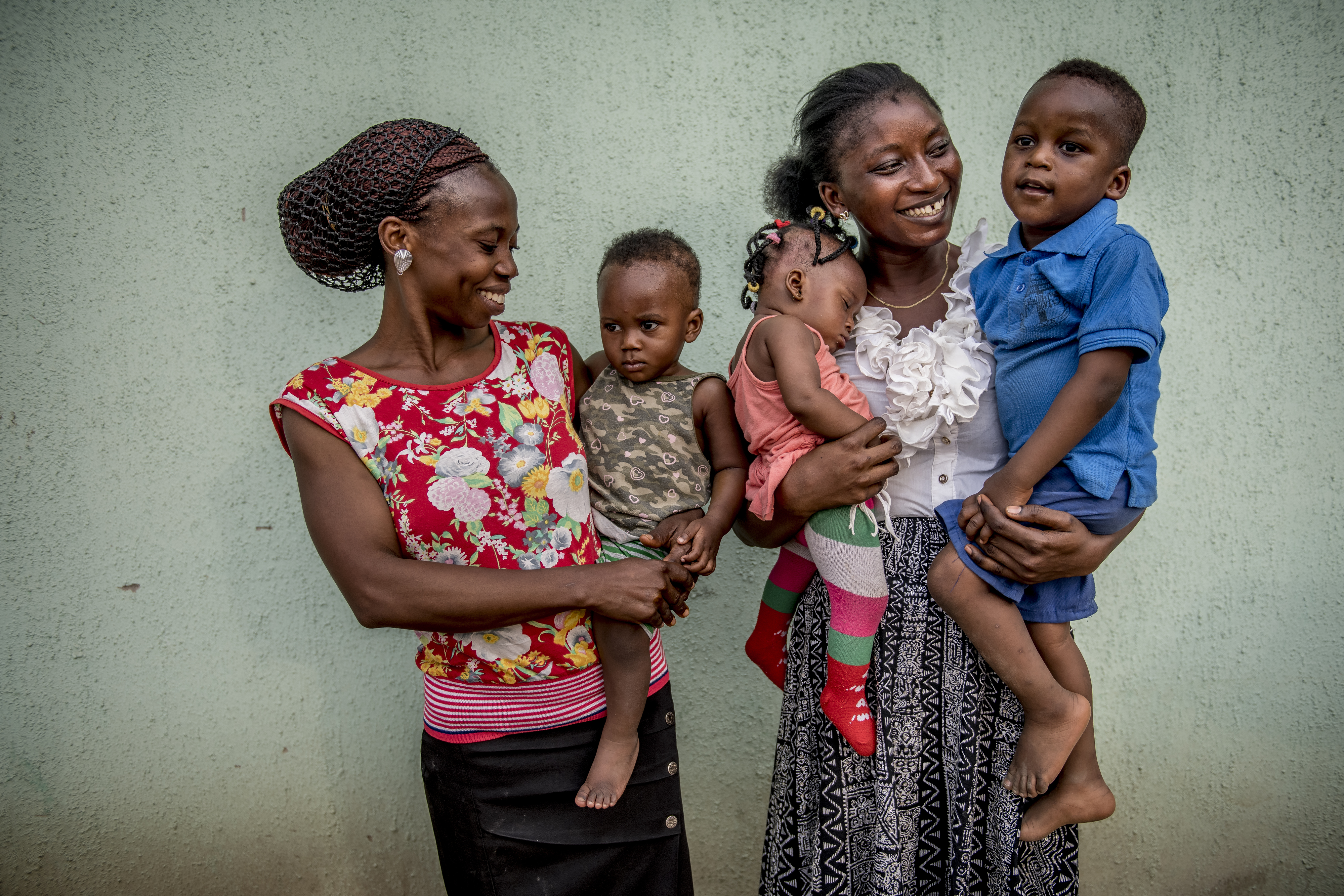
GREETINGS from the TASK FORCE SECRETARIAT
Dear Friends,
2020 has been an unprecedented year in many ways. Despite the COVID-19 pandemic, we have continued to advocate for children and share knowledge and resources to strengthen comprehensive child health programming around the world. As a result, a child somewhere received the care they needed and survived. Thank you for being part of the Child Health Task Force and for doing your part to advance our common goal.
The year 2021 is the beginning of the last decade to 2030. Let us commit to supporting our country partners to provide equitable health services that will enable reduction in mortality and ensure that children everywhere survive and thrive.
Our priorities for the coming year include:
- Support implementation of programs through a country-led engagement strategy
- Generate and/or share existing evidence on multi-sectoral programming along the life course
- Improve quality of care and equity
Sincerely,
Dyness Kasungami, Director of the Child Health Task Force
TASK FORCE MEMBERS MEETING
In December, the Secretariat hosted a membership-wide meeting to discuss the results of the 2020 pulse check survey sent out to members in August. The presentation was followed by a discussion where members provided feedback and suggestions to the Secretariat. Key suggestions by members included:
- Emphasize the newborn component of the Task Force, including as a theme within subgroups.
- Explore opportunities for the Task Force to connect with other global networks.
- Strengthen support to countries.
- The Task Force connecting members to existing resources within and outside the network. For example, Zambia’s Newborn Essential Solutions and Technologies (NEST) training institution expressed the need for equipment to successfully implement the ETAT strategy and training of HCWs in neonatal resuscitation at the hospital level.
You can read the final report on the 2020 membership survey here. If you would like to still contribute to the conversation, feel free to email us at childhealthtaskforce@jsi.com.
Watch this tutorial recorded live from the members' meeting on how to access resources on the Task Force website!
SCHOOL HEALTH & NUTRITION IN A GLOBAL PANDEMIC
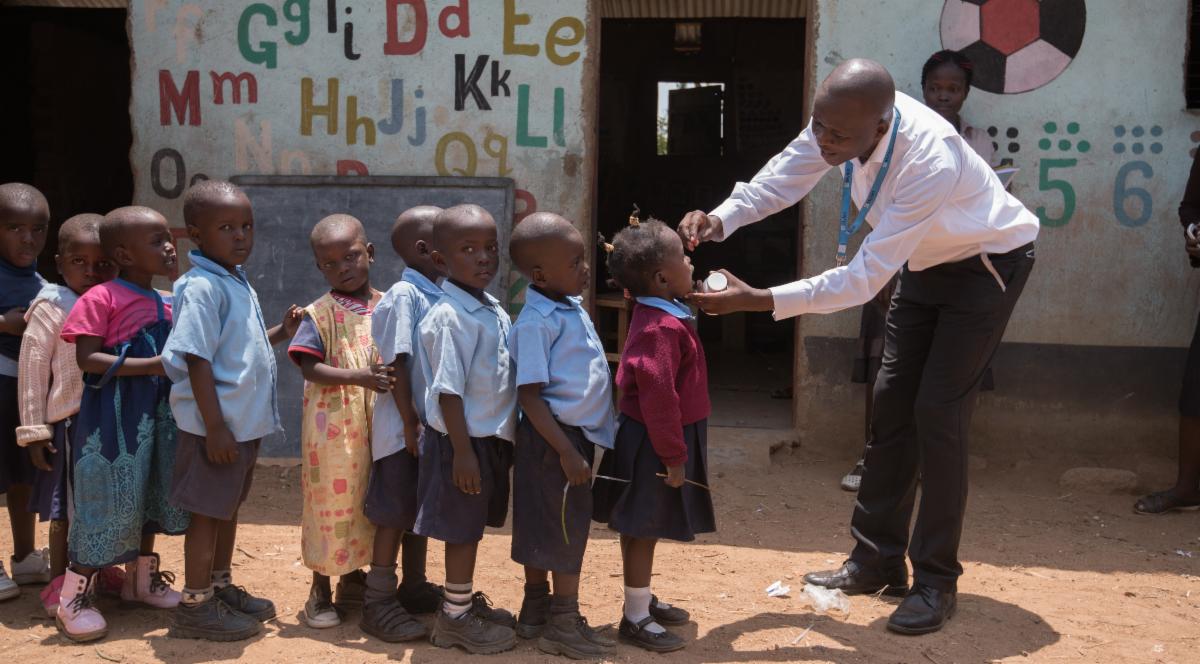
In honor of World Children’s Day on November 20th, the Secretariat released a blog post on the Child Health Task Force website emphasizing the importance of school health and nutrition in nurturing the child through a life-course, multisectoral approach. The authors share examples of countries’ successfully adapting their learning environments and school programs to sustain child health and nutrition in the context of COVID-19. The Re-imagining the Package of Care for Children subgroup will continue to move this agenda on school health forward into 2021. Click here or on the photo above to read the full blog!
UPDATES TO THE COVID-19 RESOURCE PAGE
Our understanding of child transmission of SARS-CoV-2 is rapidly evolving. While children often experience milder symptoms than adults, they are increasingly recognized as playing a role in the community spread of COVID-19 and social distancing measures continue to be recommended for all ages. According to a recent article in the Journal of Infectious Diseases, adolescents and children above 10 years old transmit the virus as often as adults and more often than children under 10. After the reopening of schools in France, England, Israel, and Chile, a rapid spread was observed in secondary and high schools, while limited spread was observed in primary schools.
There are also many unanticipated, secondary consequences of the COVID-19 pandemic and response on children and adolescents. For example, nationwide lockdowns and school closures have had a negative impact on child and adolescent mental health globally. The pandemic poses additional challenges for children in low and middle income countries (LMICs), including diversion of resources away from child health, lack of access to PPE, and a high prevalence of risk factors for severe respiratory infection such as HIV and malnutrition. LMICs also experience greater disruptions of essential services than high-income countries do, directly impacting care for children and adolescents.
The list of featured journal articles and resources has also been updated and includes an archive of articles shared by the Task Force on COVID-19 and child health, which will be added to regularly. You can find all past recordings and resources from our webinar series Understanding Child Health in the Context of COVID-19 on this page, as well as the Quality of Care Network and QoC Subgroup webinar series Delivering Quality Essential Maternal, Newborn and Child Health Series during COVID-19 here. The Quality of Care Network has also launched a new webinar series for October 2020 through January 2021 on lessons learned from improving quality of care during COVID-19. See News from the Network below for more details.
Click here to go to the COVID-19 resource page!
RECENT WEBINARS
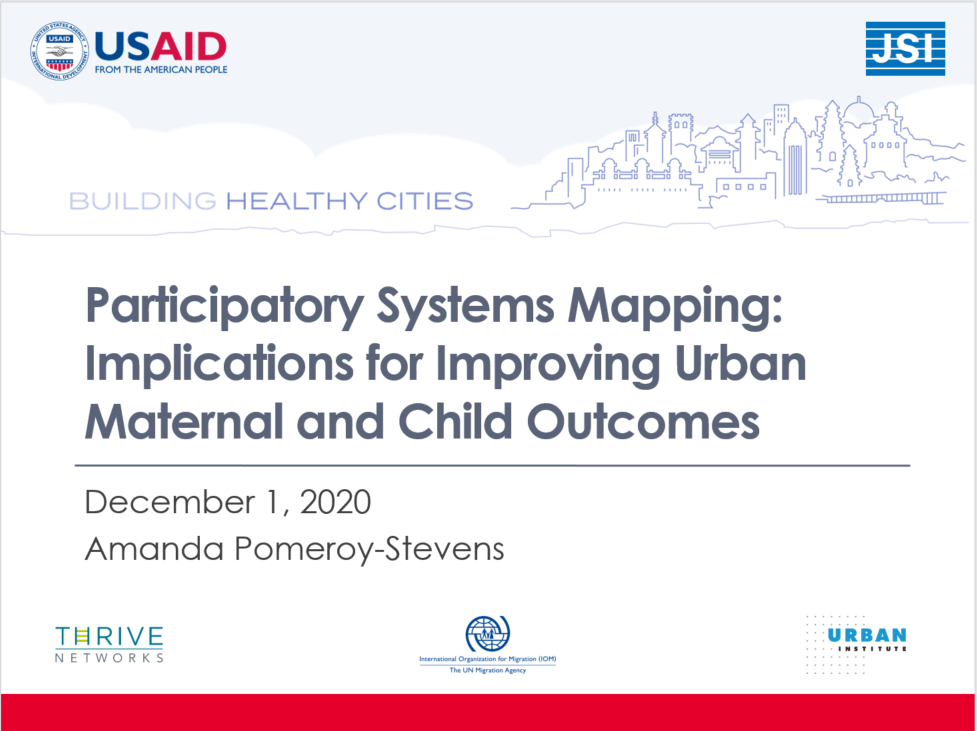
This webinar featured the USAID-funded, JSI project: Building Healthy Cities. The project has engaged with four “Smart Cities” including Indore, India, Makassar, Indonesia, Kathmandu, Nepal, and Da Nang, Vietnam. Project Director Amanda Pomeroy-Stevens shared the Indore Systems Map, which you can interact with directly in Hindi and English, along with the accompanying Leverage Map. You can access a recording of the webinar here (passcode: $8763$3n) or on the Building Healthy Cities YouTube Playlist.
Click on the photo above for more information!
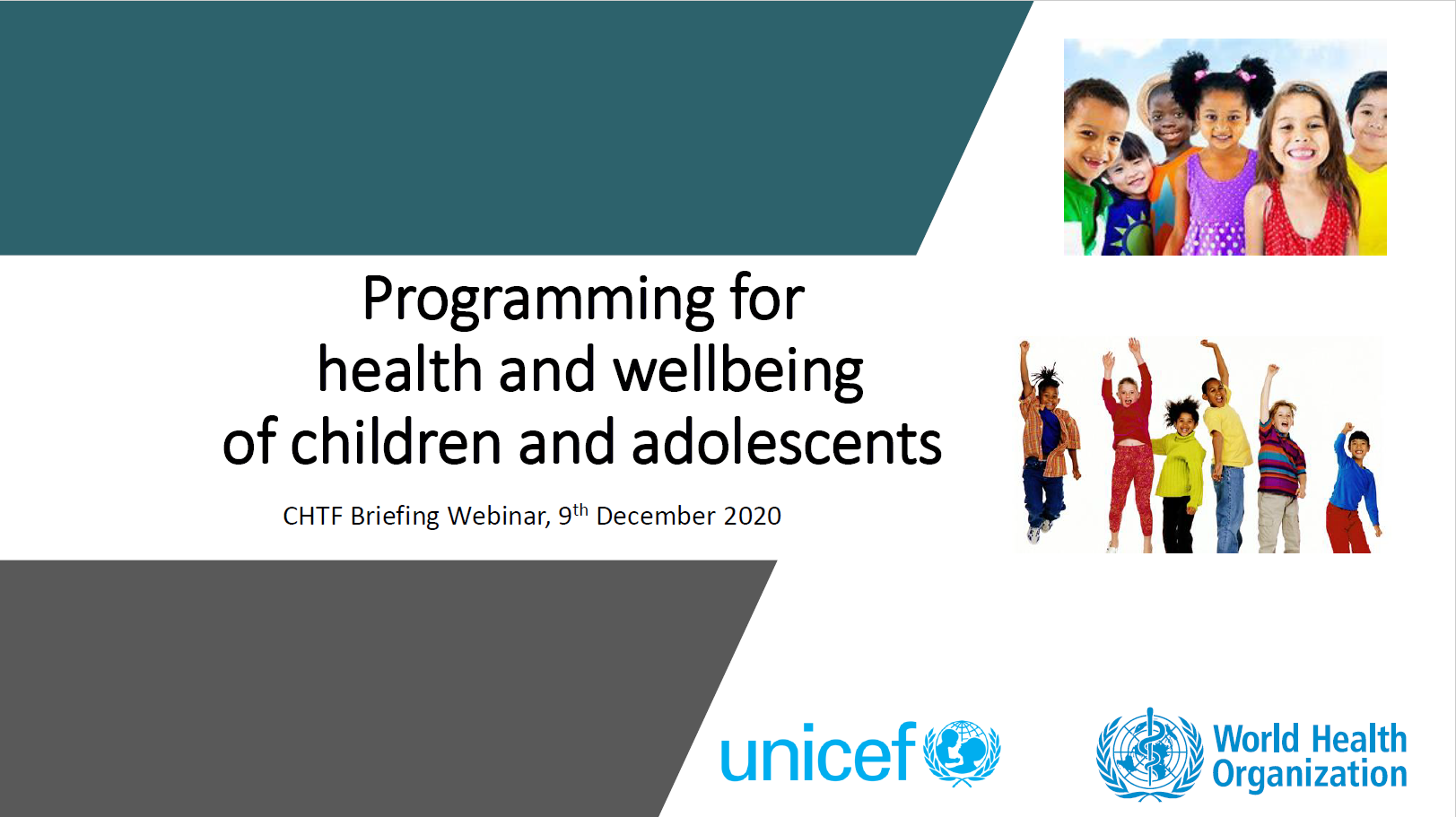
The Child Health Task Force hosted a webinar in collaboration with WHO and UNICEF on the Child Health Redesign vision and framework. The redesign represents a shift from focusing on children under five to championing a life-course approach to improve child and adolescent wellbeing worldwide. You can access a recording of the webinar here (passcode: TO&&J8tw). To provide feedback on the vision document, please see information on the ongoing open consultation in News from the Network.
Click on the photo above for more information!
SUBGROUP HIGHLIGHT: Private Sector CHRNI Exercise
Understanding how best to harness the private sector to improve child health and survival continues to be a gap in the literature, according to a SHOPSPlus review of childhood illness case management in the private health sector. To fill this gap, SHOPS Plus collaborated with Boston University and USAID to conduct a collaborative private sector Child Health and Nutrition Research Initiative (CHNRI) exercise. An initial step in the CHNRI process is to engage a wide and diverse group of expert stakeholders to participate. The research team leveraged the Child Health Task Force, and its Private Sector Engagement (PSE) Subgroup specifically, to reach individuals with expertise in child health and the private sector.
The PSE Subgroup hosted a meeting in October to present the CHNRI findings to Task Force members and gather their feedback. A total of 127 participants joined the call. A recording of the webinar can be found here, (passcode: &L3&pu5.) and the presentation slides here. The team, including members of the Task Force leadership, also disseminated results through an article, published in the Journal of Global Health on December 31, 2020.
Thank you to all who joined the call and contributed! The Task Force and its members played a critical role in making the CHNRI process itself a success and in sharing the results of the prioritized global research agenda on private sector child health service delivery. The Secretariat encourages other projects and subgroups to use the Task Force as a resource in this way.
SUBGROUP UPDATES: Looking Ahead to 2021
In preparation for the new year, the co-chairs have reflected on their subgroups’ activities and accomplishments from 2020 and discussed priorities for 2021. To join any of the subgroups, please fill out this form. If you are particularly interested in any of the work listed, please email the co-chairs of the subgroup to become more involved.
Child Health in Emergencies & Humanitarian Settings (CHEHS)
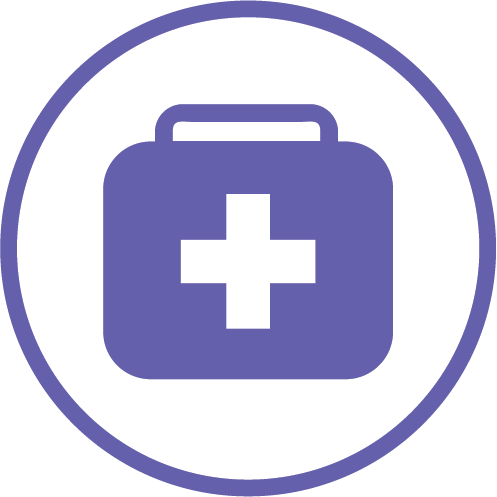 Co-chairs: Fouzia Shafique, UNICEF, fshafique@unicef.org; Nureyan Zunong, Save the Children, nzunong@savechildren.org
Co-chairs: Fouzia Shafique, UNICEF, fshafique@unicef.org; Nureyan Zunong, Save the Children, nzunong@savechildren.org
2021 Priorities: The subgroup will explore using data collected on access to essential services during COVID-19 for advocacy as the pandemic continues. The subgroup also plans to collaborate with Boston University to identify challenges facing “zero dose” children in humanitarian settings. They hope to build on last year’s literature review on child health and humanitarian settings to address the unanswered questions. The subgroup plans to meet quarterly moving forward.
Commodities for Newborn & Child Health
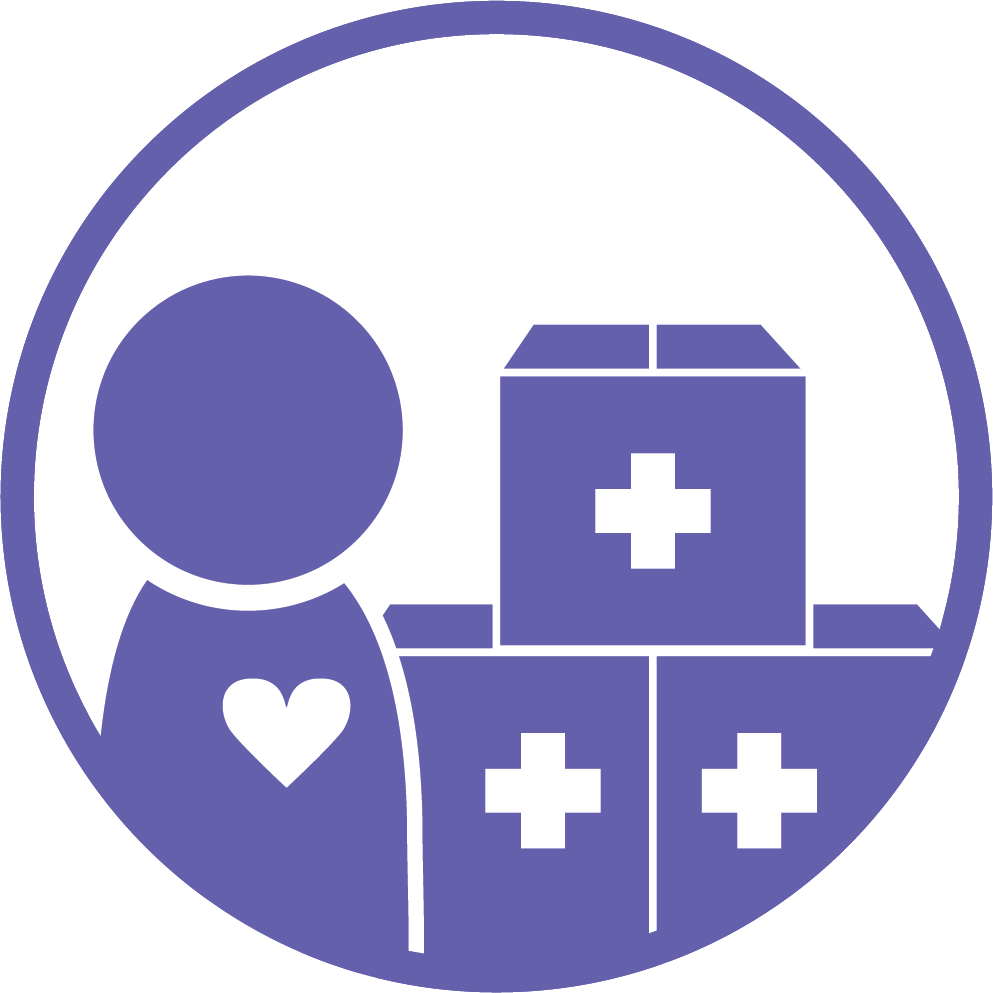
![]() Co-chairs: Ken Legins, UNICEF, klegins@unicef.org; Smita Kumar, USAID, smkumar@usaid.gov
Co-chairs: Ken Legins, UNICEF, klegins@unicef.org; Smita Kumar, USAID, smkumar@usaid.gov
2021 Priorities: The subgroup plans to focus their activities around three main areas: 1. Optimizing coordination within global supply chain stakeholders for integrated national systems, including an essential child and newborn commodities package. 2. Advocating for improved access to and appropriate use of quality newborn and child health commodities in the context of the humanitarian-development continuum and COVID-19, emphasizing amoxicillin and ORS/zinc. 3. Advocating for more private sector collaboration and engagement for newborn and child commodities.
 Co-chairs: Darlene Irby, Jhpiego, Darlene.Irby@jhpiego.org; Jeanne Koepsell, Save the Children, jkoepsell@savechildren.org
Co-chairs: Darlene Irby, Jhpiego, Darlene.Irby@jhpiego.org; Jeanne Koepsell, Save the Children, jkoepsell@savechildren.org
2021 Priorities: The subgroup plans to continue their knowledge sharing webinars, focusing on innovations including Human Centered Design (HCD) in 2021. The subgroup also discussed developing a manual to instruct NGOs on utilizing digital health platforms. They plan to collaborate more with other subgroups moving forward.
 Co-chairs: David Hamer, Boston University, dhamer@bu.edu; Janna Patterson, American Academy of Pediatrics (AAP), jpatterson@aap.org
Co-chairs: David Hamer, Boston University, dhamer@bu.edu; Janna Patterson, American Academy of Pediatrics (AAP), jpatterson@aap.org
2021 Priorities: The subgroup plans to focus their meetings around COVID-19 vaccination, including the status of the vaccine for children, as well as child development from newborn to early childhood to school-age children. The co-chairs will also support an inventory tracking implementation science research on child health globally and ask members to contribute.
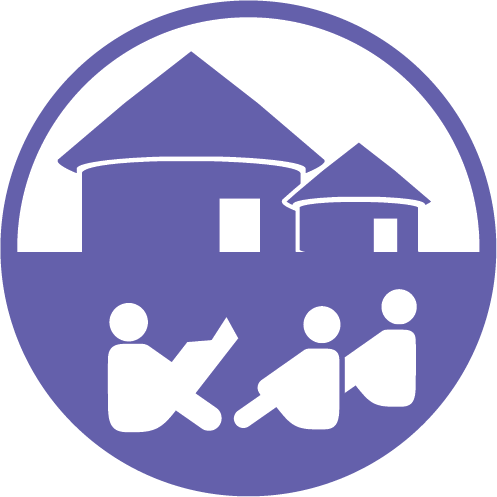 Co-chairs: Anne Linn, USAID, alinn@usaid.gov; Alfonso Rosales, Independent, arosales06@gmail.com; Humphreys Nsona, Ministry of Health & Population, Malawi, hnsona@gmail.com
Co-chairs: Anne Linn, USAID, alinn@usaid.gov; Alfonso Rosales, Independent, arosales06@gmail.com; Humphreys Nsona, Ministry of Health & Population, Malawi, hnsona@gmail.com
2021 Priorities: The subgroup welcomes a third co-chair: Mr. Humphreys Nsona, Program Manager and Head of IMCI unit within the Community Health Sciences unit of the Ministry of Health in Malawi. Subgroup members agreed at a recent meeting to convene on a bi-monthly basis, focusing on 3 main workstreams: 1. Collaborate with the M&E Subgroup to identify determinants and indicators for assessing institutionalization of iCCM, 2. Synthesize operational challenges to scale-up/delivery of quality iCCM to inform design and implementation, and 3. Facilitate sharing of best practices from countries to address identified implementation challenges. The subgroup also plans to collaborate with PMI Impact Malaria to develop an iCCM toolkit to meet country needs.
 Co-chairs: Debra Jackson, LSHTM, Debra.Jackson@lshtm.ac.uk; Kate Gilroy, JSI, kate_gilroy@jsi.com
Co-chairs: Debra Jackson, LSHTM, Debra.Jackson@lshtm.ac.uk; Kate Gilroy, JSI, kate_gilroy@jsi.com
2021 Priorities: The subgroup will focus on re-orienting their work to the WHO Child Health Redesign, M&E for community child health, and leveraging digital health. The subgroup will also explore integrating early childhood development M&E into child health, including the use of qualitative M&E routine indicators.
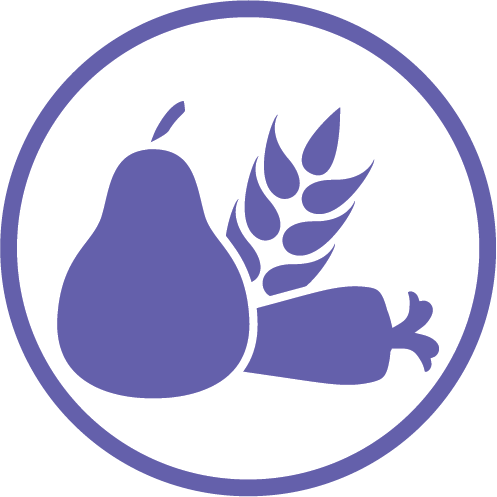 Co-chairs: Akriti Singh, Advancing Nutrition/JSI, akriti_singh@jsi.com; Bridget Aidam, Action Against Hunger, baidam@actionagainsthunger.org
Co-chairs: Akriti Singh, Advancing Nutrition/JSI, akriti_singh@jsi.com; Bridget Aidam, Action Against Hunger, baidam@actionagainsthunger.org
2021 Priorities: The subgroup has welcomed two new co-chairs in 2021! Bridget and Akriti are excited to lead the subgroup this year and revitalize regular meetings engaging with members. The subgroup hopes to address how COVID-19 has changed nutrition integration along with digital solutions to advance treatment for malnutrition. A major focus for the subgroup is bringing in more country perspectives from the membership to speak on these topics.
Private Sector Engagement (PSE)
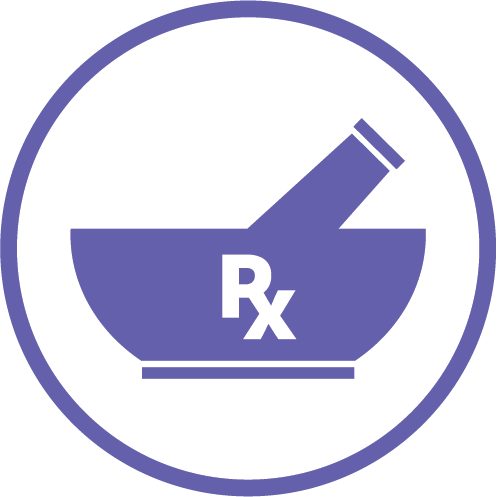 Co-chairs: Catherine Clarence, SHOPS Plus/Abt Associates, catherine_clarence@abtassoc.com; Olamide Folorunso, UNICEF, ofolorunso@unicef.org; Senait Kebede, Independent, skebede55@gmail.com
Co-chairs: Catherine Clarence, SHOPS Plus/Abt Associates, catherine_clarence@abtassoc.com; Olamide Folorunso, UNICEF, ofolorunso@unicef.org; Senait Kebede, Independent, skebede55@gmail.com
2021 Priorities: The subgroup plans to continue their monthly meetings, organized around specific themes and workstreams. Building from a recent webinar, the co-chairs plan to support the WHO Advisory Group to move the agenda forward on engaging the private health service delivery sector through governance in mixed health systems. A focus for the subgroup is understanding countries’ opportunities and challenges and then supporting the adoption of private sector engagement strategies. The subgroup will also continue to share findings and lessons learned from the Child Health and Nutrition Research Initiative (CHNRI) project and discuss private sector engagement in supply chains.
![]() Co-chairs: Anne Detjen, UNICEF, adetjen@unicef.org; Patty Jodrey, USAID, pjodrey@usaid.gov; Zaeem Haq, Save the Children, zaeem.haq@savethechildren.org
Co-chairs: Anne Detjen, UNICEF, adetjen@unicef.org; Patty Jodrey, USAID, pjodrey@usaid.gov; Zaeem Haq, Save the Children, zaeem.haq@savethechildren.org
2021 Priorities: The subgroup welcomes a new co-chair, Patty Jodrey (USAID), in 2021. The co-chairs sent an end-of-year letter to members highlighting accomplishments from 2020 and priorities for the new year (published on the subgroup’s webpage linked above). These priorities include 1. Technical assistance to countries on implementation of pediatric QoC standards, 2. Continued collaboration with the M&E subgroup on pediatric QoC measurement, 3. Crowdsourcing practical approaches to delivering quality care in community health platforms and advancing quality improvement at community level, 4. Expanding application and use of pediatric death audit, and 5. Webinars to share best practices and country case studies.
Re-imagining the Package of Care for Children
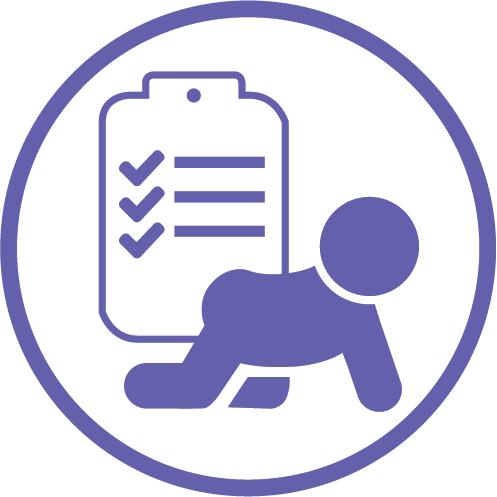
Co-chairs: Cara Endyke-Doran, Project Concern International (PCI), cendykedoran@pciglobal.org; Raoul Bermejo, UNICEF, rbermejo@unicef.org
2021 Priorities: The subgroup plans to hold meetings on the last Friday of every month in 2021. They plan to continue their workstream on school health, focusing on multisectoral approaches, adolescent health and the life course approach, in line with the WHO Child Health Redesign. The subgroup will provide feedback on relevant elements of the redesign document and champion associated implementation tools and guidance.
NEWS FROM THE NETWORK
- Response Needed: WHO Child Health Redesign Open Consultation The World Health Organization (WHO) and United Nations Children’s Fund (UNICEF) have jointly developed a comprehensive agenda for the health and wellbeing of children and adolescents, known as the Child Health Redesign. Please consider sharing your voice by providing feedback on the working document to strengthen and expand investments in child and adolescent health and wellbeing worldwide. To access and review the document, go to the link above, enter your name and email, and follow the instructions sent to you. The deadline for completing the online survey is January 31, 2021 at 12am CET [GMT+1].
- New Webinar Series: Lessons from improving quality of care during COVID-19 The Network for Improving Quality of Care for Maternal, Newborn and Child Health in collaboration with the WHO has launched a new webinar series. The first webinar, Lesson #1: Capitalize on remote learning and coaching, shared lessons from Nigeria's experience reducing the indirect causes of maternal morbidity & mortality. The most recent webinar was Lesson #2: Adapt and innovate to support Quality Improvement teams in India and Bangladesh.
- Training Course: Epidemiology and Modeling of Infectious Diseases in the Humanitarian Setting by READY Initiative The goal of this training is to equip participants with foundational infectious disease epidemiology and modeling concepts to be able to have a better command of the interpretation of common data that is available for humanitarian emergencies. Find out more about the program and how to apply at the link above. Applications due January 31, 2021.
- Interim Guidance: Analyzing and Using Routine Data to Monitor the Effects of COVID-19 on Essential Health Services: Practical guide for national and subnational decision-makers Published by WHO on January 14, 2021, this guidance provides practical recommendations on how to use key performance indicators to analyze changes in access to and delivery of essential health services within the context of the COVID-19 pandemic; how to visualize and interpret these data; and how to use the findings to guide modifications for safe delivery of services and transitioning towards restoration and recovery.
- Policy Brief: COVID-19 and Fragile Settings by UHC2030 International Health Partnership's Fragile Settings Technical Working Group Despite many unknowns in fragile settings, important practical lessons are emerging about how to enhance COVID-19 response and recovery. The CHEHS subgroup co-chairs recently shared this policy brief from the UHC2030 Fragile Settings Technical Working Group which presents some essential emerging lessons. Published in December, the paper emphasizes the need to adapt global COVID-19 guidance to context-specific and evolving needs in fragile settings and protect health funding for these communities.
If you have announcements, resources, or other information to share, please email: childhealthtaskforce@jsi.com to be included in the next newsletter.
UPCOMING EVENTS
January 25, 2021, 10am EST [GMT-5] | Lancet Series on Women's and Children's Health in Conflict Settings: A panel of experts and frontline workers will be discussing a new four-part Lancet paper series at this upcoming webinar.
January 27-28, 2021, 8am-12:15pm EST [GMT-5] | Unlocking Potential: Prioritizing Child & Adolescent Health in the New Decade: The Global Practitioner Conference hosted by the CORE Group was rescheduled for late January, and registration is now open! The iCCM Subgroup of the Task Force will host a concurrent session on Institutionalizing Integrated Community Case Management to End Preventable Child Deaths. The panel discussion will share recommendations and outcomes from a technical consultation and country action planning.
January 27, 2021, 9am EST [GMT-5] | Quality of Care Subgroup Meeting: Priorities and Actions for 2021 / La Réunion du sous-groupe de la qualité de soins (QoC) : Des priorités et des actions de 2021: The QoC subgroup will hold its next meeting later this month to gather members’ feedback and discuss their priorities for workstreams in 2021. The primary language of the meeting is English, however French closed captions will be provided.
February 2, 2021, 9am EST [GMT-5] | Quality of Care for IMNCI in Private and Public Health Facilities: Results from a SHOPS Plus analysis in seven countries: The PSE and QoC subgroups are co-hosting this upcoming webinar, featuring reflections from in-country colleagues on implementing IMCI guidelines at the country level.
February 4, 2021, 10am EST [GMT-5] | Nutrition Subgroup Relaunch Meeting: The meeting will feature a presentation on Results for Development (R4D) and waste management, followed by a discussion of the subgroup’s priorities. Be on the lookout for an invitation!
February 11, 2021, 10am EST [GMT-5] | Demystifying The Global Financing Facility - Opportunities for Malaria & iCCM: The iCCM subgroup will host a workshop to launch The Global Financing Facility Guide for National Malaria Programs, developed by the RBM Partnership to End Malaria. The guide unpacks the details of the GFF financing mechanism and provides recommendations for intensified malaria engagement, advocacy, and coordination.
